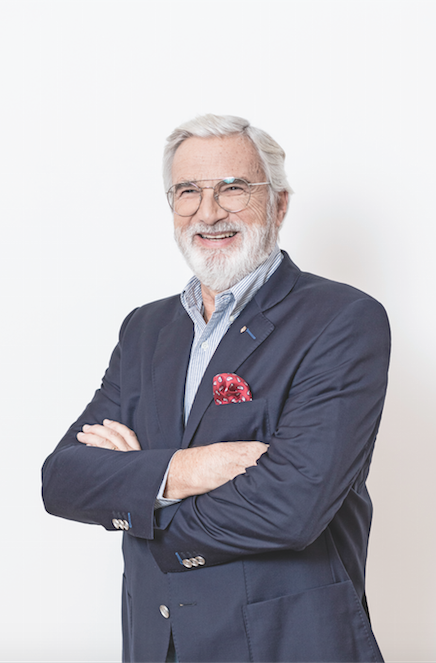In a time when ‘transformation’ is every corporation’s favourite buzzword, Joachim (Ted) Naimer remains secure in doing things the way his grandfather had done. After all, as the man in charge of Kraus & Naimer humorously points out, the electrical switch business is anchored by the laws of physics, which “don’t really change with time”.

Founded by Ted’s grandfather, Lorenz Naimer, and his business partner, Franz Kraus, in 1907, Kraus & Naimer has grown from a small firm run out of a cellar to a global company with six production facilities and 18 wholly owned sales and servicing offices worldwide, employing 900 people.
Ensuring that a business that has thrived for three generations makes it to the fourth is a big responsibility. It may be in an industry that’s mercifully exempt from the rush to transform, but that’s not to say Ted is resting on his laurels.
“We have never sat back and said, ‘It’s good, we don’t need to do anything’. We have always believed that what’s good can be made better. I am in constant pursuit of perfection,” he asserts.
In its endless quest for higher quality, Kraus & Naimer has taken significant control of its production processes – a fact that Ted, as a trained electrical engineer, takes a lot of pride in.
“We build our own assembly equipment, robots and moulds for the injection moulding machines. We are continually innovating and pushing the limits of the technology we employ,” he says.
“This has also allowed us to offer a high level of customisation. Our customers are not limited to a fixed selection to choose from. We go to great lengths to make our products fit their needs. Most other companies don’t – and cannot – do this.”
Imperative to the firm’s promise of customisable products is a modular system of more than 15,000 individual parts that all comply with major international regulations and are fully compatible with one another.
This provides the possibility for seemingly endless configurations, and thus, solutions for varied needs. Ensuring that every single part meets a standardised level of quality wherever in the world it may be made is a major focus for the company.
“We may have individual parts made in New Zealand, Austria, Germany and Brazil, but all four parts need to be able to fit and work together as a whole. It’s a lot more difficult than you may expect,” Ted explains.

The company has done everything in its power to get its brand name to be synonymous with quality, but there remains one frustrating issue that it has little control over: made-in-China copies or counterfeits.
Ted explains that the former are made to look like Kraus & Naimer products, including the signature blue colour, but stop at using the brand name. Instead, they may carry subtle but deliberate misspellings of Kraus & Naimer so that only on closer inspection can they be identified as fakes.
The latter are more exacting copies that look identical to real Kraus & Naimer switches, down to the brand name on them. Each presents different challenges.
“With copies, it’s impossible to take legal action, but when approached with complaints about faulty products, we can at least prove that these are not ours by pointing out the subtle differences,” Ted says.
We are continually innovating and pushing the limits of the technology we employ.
“With counterfeits, we can often take legal action, but we risk reputation damage among people who have purchased them without realising they were counterfeits, and when they break down, chosen not to take it up with us.
“With these copies and counterfeits comes a price war. In many instances, their prices are so low that we don’t stand a chance. Many companies today also use purchasing agents when sourcing products, which further emphasises cost over quality. We hardly ever get to speak directly to the engineers who will use the switches anymore.”
Compounding the problem is the lack of enforcement of regulations. Ted uses the situation in Europe as an example. “In Europe, the standards set by the International Electrotechnical Commission (IEC) are only recommendations,” he explains.
“Manufacturers do not have to pass rigorous tests to get the IEC stamp on their products. It’s a system based on trust, and all they have to do is claim that they are compliant.”
This has allowed many manufacturers who are not as accurate or conscientious with their testing to slip through the cracks, exposing customers to faulty or substandard products.

Those who do comply, such as Kraus & Naimer, are at a disadvantage because they run up higher production costs and are less able to offer competitive prices to their customers. Even where there are regulations, there is a different set of problems.
“Almost every country’s regulatory body has a different requirement. You would think that they were dealing with different types of electricity. Still, the differences in electrical specs between Europe, America and Australia are significant. Despite this, we have to ensure that all our products comply to several different requirements in order to sell in all territories,” says Ted.
“If I could have my way, I would like to have a single standard that everybody has to abide by and be tested to worldwide. This would level the playing field for firms like ours and allow us to truly compete.”
Although these changes are unlikely to happen soon, Ted remains undeterred.
Coincidentally, his most immediate plans for the firm do not involve getting familiar with yet another country’s regulations.
“We already have those covered; we are expanding, there’s no doubt about it, but not physically. Where we see opportunities is in the product range.” Ted describes traditional switches as being “on an island”, developing in a detached manner from other related products.
“It’s time to bring these old-fashioned electromechanical devices into the digital age, and enable them to communicate with one another,” he says.
“I predict that we are going to see a lot more interfacing with complete digital systems and automated factories, which will allow us to collect better data and analyses of the devices that the switches are installed on.
There are many parameters that switches can ‘see’, measure and report, such as the amount of current that’s coming through, the voltage, the temperature, and more. But that’s only if the set-ups are properly done, which it isn’t usually with regular switches today.
“I believe that in the future the switch is going to become the muscle, the digital device the brain, which commands the nerve – the human hand – to activate the muscle.”


